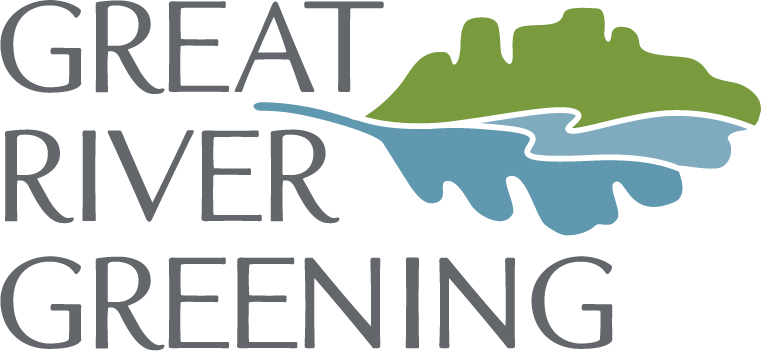Biochar: A Game-Changer for Climate Action, Soil Health, and Land Restoration
12/19/2024
At Great River Greening, we’re excited to be at the forefront of expanding the practice of processing waste materials in specialized biochar kilns for sustainable land management. We’re not just incorporating biochar into our restoration projects—we’re also leveraging our unique position to drive a broader impact. By collaborating with partners across the state, we have the opportunity to educate others on how to integrate biochar into their own initiatives, amplifying its benefits on a much larger scale.
Our latest step forward? The launch of a newly fabricated big-box biochar kiln—the first of its kind in Minnesota, a tool that is set to take our efforts to the next level.
Great River Greening’s newly fabricated big-box biochar kiln - the first of its kind in the state.
What is Biochar?
Simply put, biochar is a type of char created by heating organic material—such as wood and plant waste—in a high-temperature, low-oxygen environment. Often called "supercharged charcoal," biochar plays a key role in long-term carbon sequestration by locking up to 80% of the carbon in that material in a stable, solid form, preventing it from re-entering the atmosphere as carbon dioxide.
Biochar significantly improves soil quality.
But the benefits don’t stop there. Biochar also improves soil structure, enhances water retention, boosts nutrient availability, and even helps remediate contaminated soils. It’s a versatile, multi-purpose tool that supports both land restoration and sustainable agriculture.
A Sustainable Solution for Biomass Waste
Land restoration efforts, such as removing buckthorn and other invasive brush, often generate large amounts of biomass waste. Traditionally, this waste has been disposed of through open pile burning, which not only releases harmful greenhouse gases but also degrades soil and air quality. Biochar kilns provide a more sustainable alternative, transforming this waste into a valuable resource while minimizing harmful emissions.
Great River Greening’s new big-box biochar kiln debuted at Lake Elmo Regional Park in December for an instructional demonstration.
Traditional Oregon Kiln or flame-capped kiln which creates biomass with an open top, creating a "flame cap" primarily at the top.
RIng of Fire
State-of-the-Art Mobile Kilns
At Great River Greening, we are excited to be taking biochar production to the next level with our new mobile big-box biochar kiln (pictured above). This kiln is 3-6 times larger than traditional flame-capped kilns—also known as Oregon kilns.
Measuring 10 feet long, 6 feet wide, and 4 feet tall, our mobile kiln can process large volumes of biomass—like wood, brush and invasive species—turning them into biochar. It can produce up to 9 cubic yards of biochar per use, with two loads possible daily.
This increased capacity allows us to work more efficiently and produce more biochar. Having the big-box kiln, smaller Oregon kiln, and versatile Ring of Fire kiln in our toolkit gives us the flexibility to choose the right equipment based on the biomass volume and the specific needs of each project.
Why Should You Care About Biochar?
Carbon Storage: When biochar is buried in soil, it locks away carbon for hundreds, even thousands of years. This process helps reduce the amount of CO2 released in the atmosphere.
Soil Health: Biochar enhances soil structure, promotes microbial life, and improves nutrient retention.
Waste Reduction: Biochar is made from waste materials—wood waste, crop residues, and even municipal waste—transforming potential pollutants into a valuable resource.
Water Conservation: Thanks to its porous nature, biochar acts like a sponge and helps soil retain moisture, reducing the need for irrigation and making plants more drought-resistant.
The Bigger Picture
Biochar is emerging as a powerful solution in the fight against climate change, and at Great River Greening, we're harnessing its potential. Our ability to work throughout the state means we can educate leaders, fire marshals, land managers, and conservation districts on how to implement biochar, expanding its benefits. By leading this effort and sharing our expertise, we aim to make open pile burns a thing of the past, making biochar the go-to land management solution across the state.
Harnessing the power of biochar can turn waste into opportunity—creating a healthier planet for future generations.
Learn more about our biochar initiative here:






